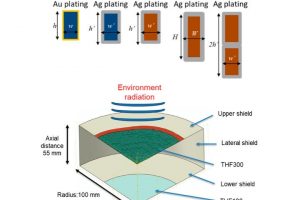New Study on Thermalization of X-IFU Instrument’s Ultra-Thin Al-Coated Filters led by N. Montinaro (INAF – OAPA)

X-ray astronomy is aimed at the understanding of the high-energy phenomena occurring in the Universe. Since our atmosphere blocks the X-ray photons, this branch of astronomy relies on observations made with satellites. In the past 30 years, X-ray astronomical observations had two main actors: the NASA satellite Chandra and XMM/Newton of the European Space Agency (ESA). The future, instead, goes with the name Athena, of ESA, currently in development.
Researchers from the National Institute for Astrophysics (INAF), University of Palermo, and University of Geneva have published a new study on the thermalization of metal mesh reinforced ultra-thin aluminum-coated filters expected to be used in the X-ray Integral Field Unit (X-IFU) of the Athena space mission. The study, led by Dr. Nicola Montinaro (INAF – Astronomical Observatory of Palermo), investigates the radial temperature profile of thermal filters essential for the X-IFU’s optimal performance.
The X-IFU, a key instrument in the European Space Agency’s Athena mission, operates at cryogenic temperatures to detect X-rays with unprecedented sensitivity. To protect its sensors from contamination and radiative heat load, thermal filters made of Al-coated polyimide membranes are employed. These filters, however, are prone to developing temperature gradients due to their ultra-thin thickness and low thermal conductance.
The team’s research employed a Finite Element Model approach to explore different design parameters and heating strategies for the outer and most critical filter with respect to molecular contamination. They examined the effects of mesh design and materials, and heating methods to ensure the filters keep a consistent temperature above 320 K, crucial for minimizing molecular contamination. The research is detailed in the paper: “Elastic characterization of nanometer-thick polymeric film for astrophysics application with an experimental-numerical method” , available in the journal Sensors, and represents a step forward in space instrumentation technology (DOI: 10.3390/s24072360).
The cover figure (click here to visualize it entirely) shows in the top panel the section of models used in the simulations, while in the bottom panel a diagram of the environment and boundary conditions used in the simulations.
